Number of laboratories: 18 laboratories.
Pharmaceutical laboratories NO -2
The pharmaceutical laboratory aims to introduce female students to the types of pharmaceutical forms and methods of preparing and evaluating them. The laboratory contains the latest educational equipment necessary for this.
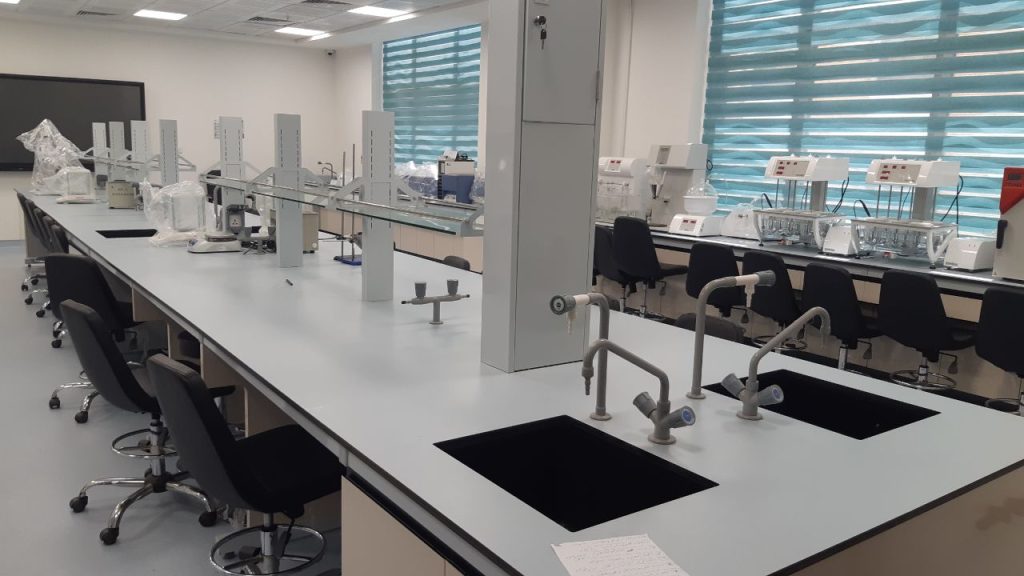
Micro biology:
In this laboratory, students learn about the essential diagnostic tests for infectious disease and pathogens, including bacterial diseases, antibiotic screening, viral infections, and parasitic diseases. It is equipped with the necessary diagnostic devices and equipment, such as microscopes, incubators, and sterilization instruments like ovens.
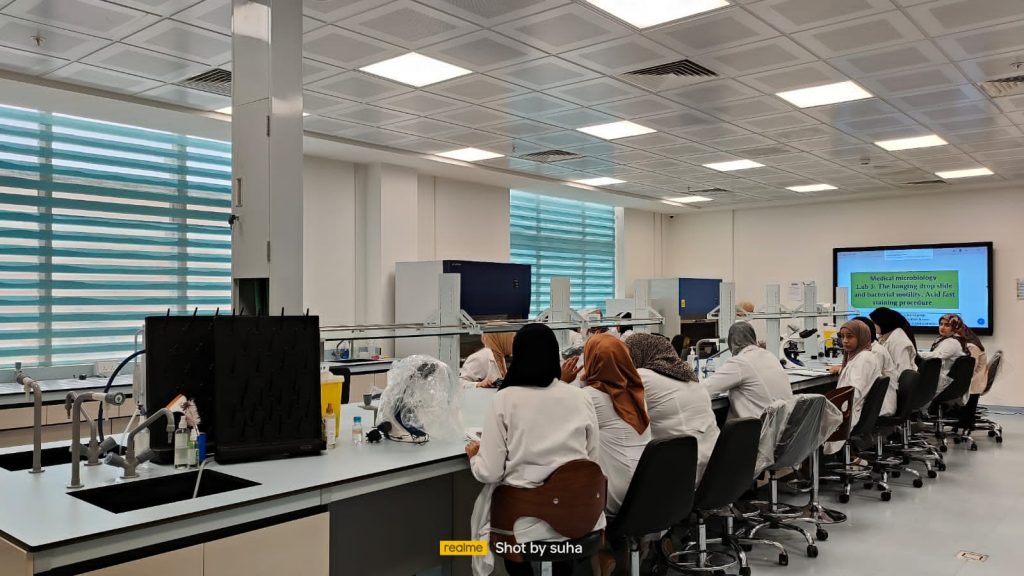
Anatomy laboratory:
This laboratory is dedicated to the study of the human body's anatomical structure by examining various tissues, including bones, muscles, blood vessels, and internal organs. The goal of this laboratory is to provide a deep and accurate understanding of body structure, which is a critical foundation for students in the College of Pharmacy.

Computer lab number – 2
The objective of this laboratory is to teach computer science to first- and second-year pharmacy students and to conduct several courses in computing. The computer lab is equipped with modern computers designed for training and education, along with display devices that support the educational process in computing specialization. Additionally, it has many approved accessories for educational and training purposes.
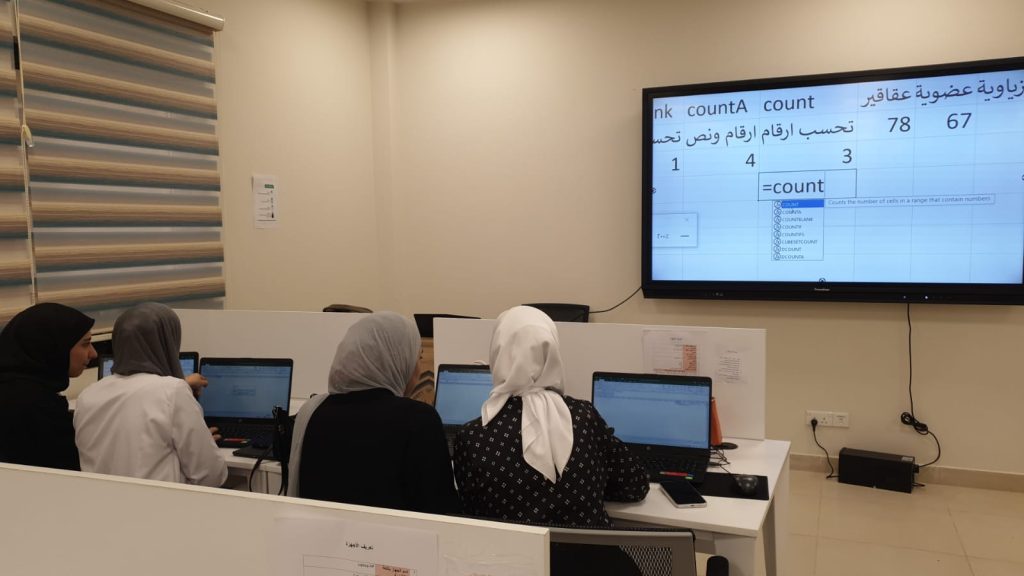
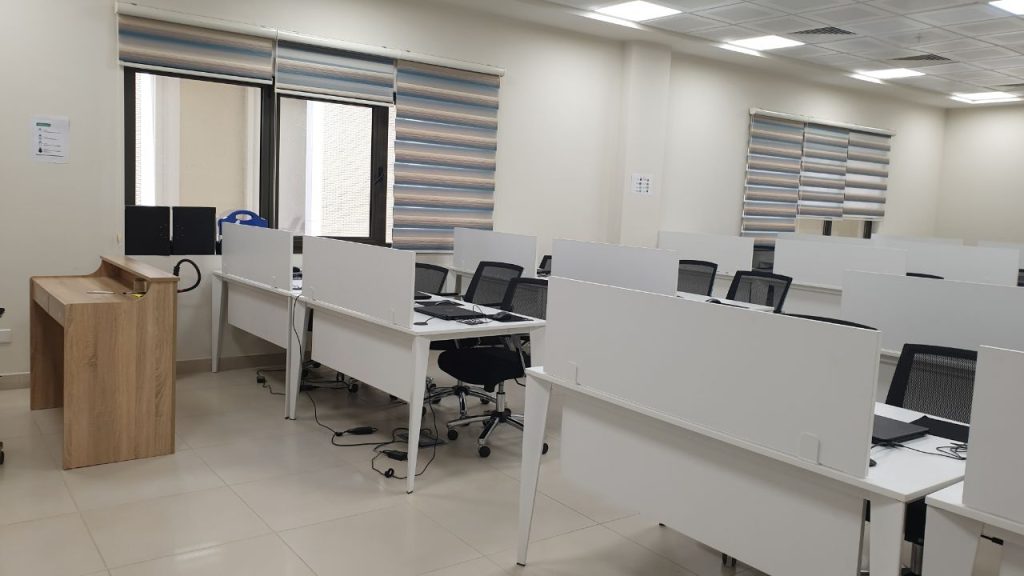
Organic chemistry laboratory
This course focuses on teaching students the fundamental principles and practical applications of organic chemistry, which is the study of carbon-containing compounds and their relevance to the field of pharmacy. This laboratory provides an essential step towards understanding how drugs are synthesized and how they function.

Pharmaceutical chemistry
The laboratory aims to give students an overview of organic and biological compounds and enhances their ability to perform various chemical experiments. Students learn the basic concepts of pharmaceutical organic chemistry through the structure, properties, and reactions of organic compounds. They engage in identifying the chemical structure of organic compounds, understanding their reactions, and synthesizing organic compounds with known pharmacological activity, as well as learning methods for purification and characterization to enhance their research capabilities.

Medical Pharmacognosy Laboratory
This specialized laboratory focuses on studying medicinal plants and their natural sources to analyze and extract active compounds used in drug manufacturing.
The laboratory aims to equip students with an understanding of the relationship between herbal medications and pharmaceutical applications
in addition to training them in the chemical and biological
analysis of these compounds.

Medical physics laboratory
Dedicated to training female students on the principles of physics and medical applications in this field and providing students with the knowledge and technical skills to calculate natural constants and how to deal with devices and equipment inside the laboratory and enable female students to think, analyze and discuss the results, raise the level of their recovery and deduction and make them able to link theoretical ideas of physics with field practices through the development of their practical skills
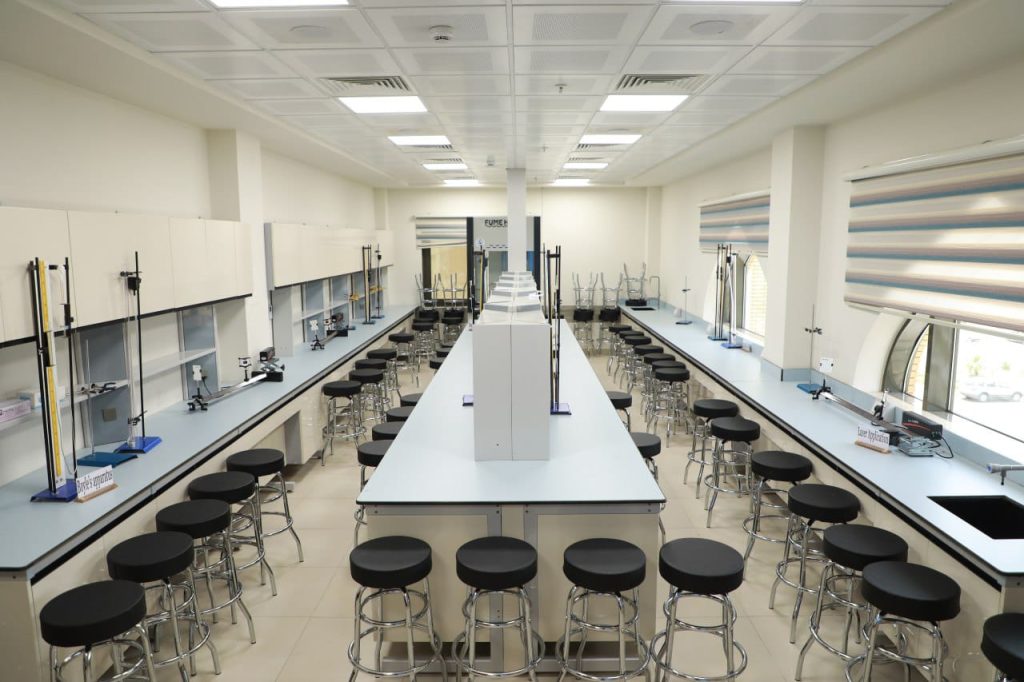
Medical Physiology Laboratory
Students learn through this laboratory about the mechanisms of action and study the vital functions of the human body's organs and systems,
including diagnosing and determining laboratory tests such as blood typing and differential diagnosis of blood cells, among other laboratory tests.
This laboratory aids students in understanding
how the body functions under normal conditions and how drugs affect these functions
by translating theoretical concepts into practical applications.

Pharmaceuticals and toxicology laboratory
This laboratory is concerned with studying methods for handling laboratory animals and the effects of various drugs and dosages on them.
Toxicology and its clinical applications are also subjects of study in addition to the study of the harmful effects of drugs and chemicals.

Biochemistry laboratory
This laboratory focuses on studying the substances and chemical processes that occur in living systems such as cells, tissues, and organs. Various techniques are applied in this laboratory to understand and analyze the chemical aspects of life, including the study of biological reactions, protein analysis, nucleic acids, and other health and life sciences-related research.
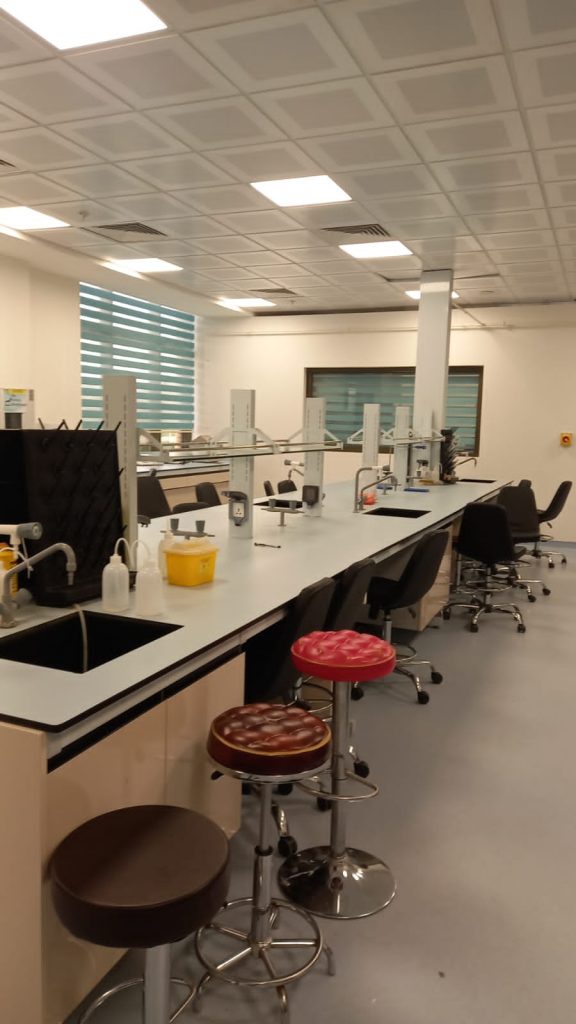
Industrial Laboratory
The mini-pharmaceutical factory, with its production, testing, evaluation, and development sections, contains
unique German-made multi-purpose equipment, comparable to other colleges of pharmacy in Iraq, suitable for all
liquid pharmaceutical dosage forms (syrups, suspensions, and solids)
and semi-solid ointments and emulsions at the training level (tablets, capsules, and powder).
This is in addition to the mini-educational training program that links the laboratory with the Uruk Pharmaceuticals Factory, affiliated with the Holy Shrine of Imam Hussain (AS), through weekly field visits for female students to observe firsthand
manufacturing and evaluation processes at the factory and production levels.

Pharmacy Simulation Laboratory
This laboratory represents one of the fundamental pillars in training and practically qualifying students,
providing a simulated environment for realistic pharmacy operations.
The pharmacy aims to develop students' skills in providing pharmaceutical services such as preparing medications, dispensing prescriptions,
and advising patients on the optimal use of medications.
It also contributes to enhancing communication between students and patients in a professional manner,
in addition to organizing workshops and training courses to familiarize students with the latest developments in the pharmaceutical field, ensuring their preparedness for the job market with high efficiency.

Animal House
Designed to accommodate laboratory animals, the animal house is equipped with the necessary equipment and specialized cages for breeding various laboratory animals (mice, rats, and rabbits) along with feed,
bedding, cooling and heating systems, and ventilation systems
A trained technician is responsible for the basic care of laboratory animals.
The animal house is a primary resource for supporting scientific experiments for students in the initial stages of pharmacology and toxicology, allowing them to learn how drugs work, their pathways in the body,
and their side effects and toxicity through experimentation on these animals to demonstrate their effects.
Furthermore, the animal house is open to graduate students from various colleges within our university,
as well as other Iraqi universities and faculty members wishing to conduct scientific research on laboratory animals.
Additionally, fifth-year graduation projects supervised by college professors often involve laboratory animals.
We have also initiated a training course on how to manage and handle laboratory animals,
research techniques used with these animals, and how to calculate drug dosages and concentrations of drugs and toxic substances.
Our branch continues to provide all scientific and technical services related to this field.
.
.
.
.

General Chemistry Laboratory
The laboratory focuses on teaching chemical concepts and fundamentals, which serve as the cornerstone for understanding pharmaceutical and biochemical processes
.

Drug design Laboratory
It is a specialized laboratory that emphasizes the use of computing and
modeling techniques to predict how potential drugs interact with their
biological targets, such as proteins and enzymes. Computer-aided drug
design (CADD) is one of the prominent tools used in this type of research
where the three-dimensional structure of environments is analyzed to identify the best possible interactions between the drug compound and the biological target

